I visited my daughter in Washington DC (she's a freshman at George Washington University) during the week of Thomas Jefferson's 273rd birthday (born April 13th, 1743.) My visit was originally timed to coincide with the Washington Cherry Blossom Festival. By the time I was actually there the cherry blossom peak was long past (darned global warming!)
With no early morning photo outings to the tidal basin cherry blossom groves worth taking, I decided to turn my visit into a Jeffersonian themed one, including taking a tour of the Thomas Jefferson building of the Library of Congress (there are three buildings, though they only offer tours of the one); visiting the Jefferson Memorial during the day and at night; and finishing by visiting Jefferson's estate at Monticello, just outside of Charlottesville, Virginia (home of the University of Virginia of whom Jefferson was the original patron.)
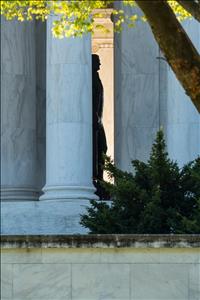  |
|
|
All three locations are fascinating. The Jefferson Memorial is definitely my favorite DC edifice, though getting pictures of it without hordes of people in the frame is a challenge. The fun fact I learned on this visit is that the Washington Memorial (seemingly set dead center in the National Mall) is actually slightly offset so that the direct view from the White House is of the Jefferson Memorial rather than the Washington. Apparently a deliberate reminder to each President of what came before.
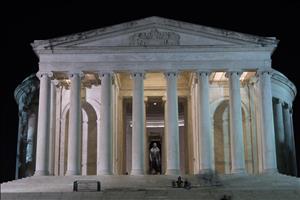 |
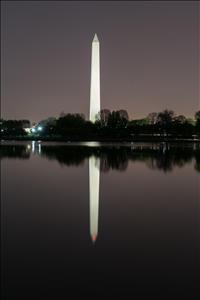 |
The library building is beautiful, with a never ending succession of clever design elements that can only truly be appreciated by taking the short official tour. I had been to this building before but hadn't taken the tour and had completely missed the very clever and often very subtle interior design elements. The official tour guide will tell you that the architect/designer was only 26 when given this commission (his first) and brought the project in on time (late 1897) and under budget (possibly the last time a US Government project could wear such labels.) But the more detailed history tends to suggest a rather more complicated project: https://en.wikipedia.org/wiki/Thomas_Jefferson_Building
 |
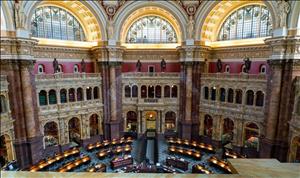 |
The original basis of the Library of Congress is Jefferson's personal book collection which he provided to the government. The ornate building you see today came, of course, long after Jefferson's time. Even today the Library requests three copies of every published document on earth. What they do when paper publishing finally ceases to exist is a current topic of discussion.
The library building connects to the Capitol building by way of a tunnel under the intervening roadway. Although you are supposed to make tour reservations in advance I decided to try my luck. I quickly joined the, very brief, official tour of the Capitol. The ongoing repair and restoration work makes interior pictures pretty dull (even in the places where you are allowed to take them) but the bonus was that the tour guide had passes to the Senate chamber visitor's gallery. Maybe all the guides do but he made it seem like it was a big deal...
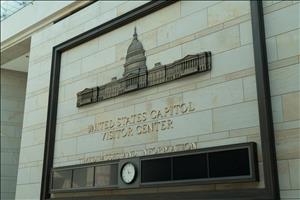 |
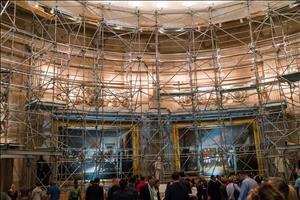 |
I sat in the visitor's gallery for about 90 minutes and could write a much longer essay about that experience and my observations. Suffice to say, I did get to see John Cornyn (R - TX) and Marco Rubio (R -FL) speak. It is well worth going but, if you plan to stay a while, take a book to read during the periods when the chamber is, essentially, silent and deserted! No photos are allowed, naturally. Wouldn't want the taxpayers getting an idea of what really goes on in there now would we?
 |
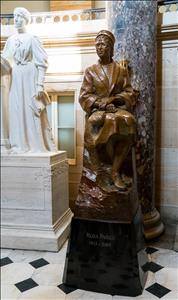 |
Monticello is a prime piece of Virginia real estate -- undoubtedly worth many millions today. Jefferson inherited the bare property from his father, the house design and construction (taking several years) are all his. The estate sits on a hill a few miles south east of Charlottesville with commanding views of Virginia to the south and east. The University is also visible -- deliberately so apparently -- the rumor being that Jefferson would dispatch instructions via messengers on horseback if he saw the construction crew doing something he did not agree with.
The main house tour is guided and shows off many original or reconstructed artifacts from Jefferson's time. He was six feet two inches tall -- making him a giant in those days -- and his beds are exactly 75 inches long and placed out of the way inside closets or small alcoves. He considered space taken by a bed to be wasted space.
Monticello was a working estate with a flourishing business in various garden products (fruit, vegetables and flowers) and the production of nails from a metalworking shop. This is also where Jefferson's slaves were housed, fed and educated. Though the layout of all this activity is understood, the original buildings (mostly wooden) are gone. A recent major donation has allowed the governing foundation to embark on a program to reconstruct replicas of the working part of the Monticello estate -- an effort likely to take a few years at least.
Choosing to walk back down the hill from the main house, you pass by the graveyard where Jefferson (and many relatives and estate members) are buried. Jefferson was explicit about his gravestone epitaph:
Here was buried Thomas Jefferson
Author of the Declaration of American Independence of the Statute of Virginia for religious freedom & Father of the University of Virginia
All mention of his other astonishing achievements being suppressed per Jefferson's instructions.
Read all about this amazing man starting here: https://www.monticello.org
There are more pictures in the gallery.